THE KOREAN WAR (1950 - 1953),IT BEGAN WHEN COMMUNIST NORTH KOREA INVADED SOUTH KOREA IN 1950.WHICH THE USSR (SOVIET UNION) OCCUPYING THE NORTH KOREA AND UNITED STATES OCCUPYING IN SOUTH KOREA.WHEN THE WAR ENDED IN 1953,KOREA WAS STILL DIVIDED AND IT REMANDS THAT TODAY.
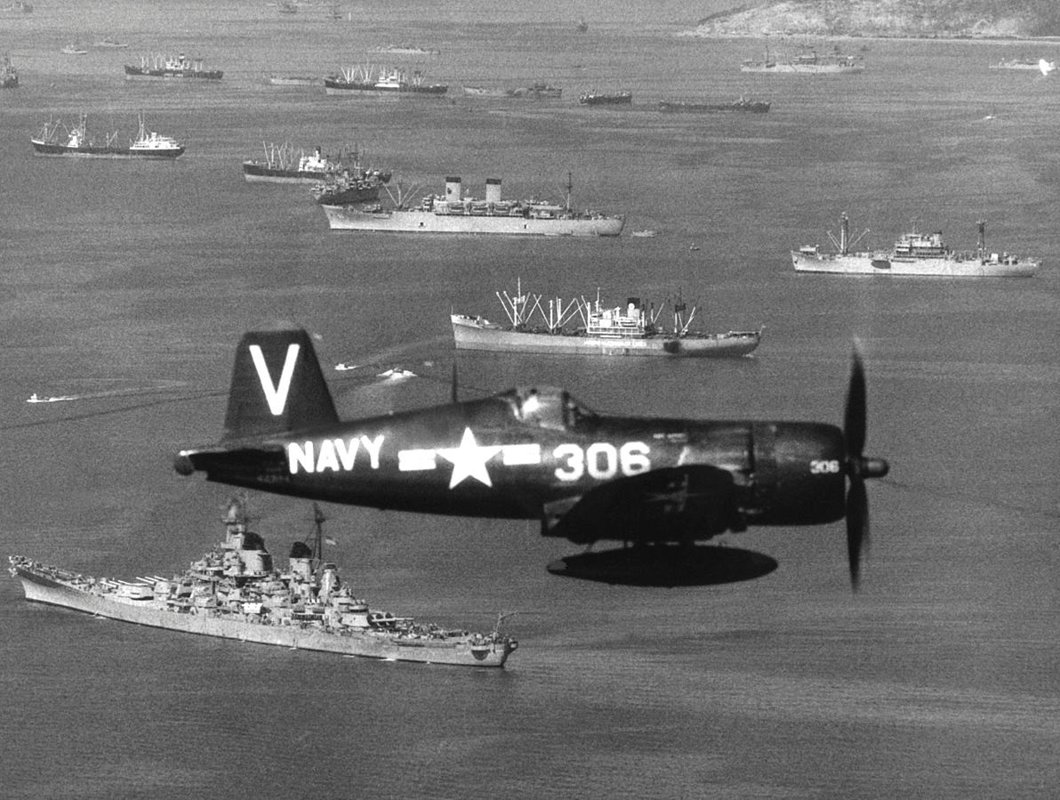 When
the armistice took effect in July 1953, Korean War aircraft in terms of
naval aviation was six hundred combat planes short of the prewar
number. Meanwhile, nine Essex-class carriers were returned to fleet
service during the war. Thirteen escort carriers
were recommissioned from 1950 to 1952, including five employed in
Sealift Command. Four deployed to Korean waters, providing close air
support (CAS) and antisubmarine warfare (ASW) capabilities.After
World War II, Korea is divided into communist North Korea and
anti-communist South Korea at a spot called the 38th parallel. Russia
controls North Korea and the U.S. controls South Korea.
When
the armistice took effect in July 1953, Korean War aircraft in terms of
naval aviation was six hundred combat planes short of the prewar
number. Meanwhile, nine Essex-class carriers were returned to fleet
service during the war. Thirteen escort carriers
were recommissioned from 1950 to 1952, including five employed in
Sealift Command. Four deployed to Korean waters, providing close air
support (CAS) and antisubmarine warfare (ASW) capabilities.After
World War II, Korea is divided into communist North Korea and
anti-communist South Korea at a spot called the 38th parallel. Russia
controls North Korea and the U.S. controls South Korea.
On 25 June 1950 the North Korean army led by Kim Il Sung, launched an offensive against South Korea North Korea launched 223,000 soldiers supported by 150 tanks across the border into South Korea. The three communist nations which went to war with the United Nations were North Korea, China and the Soviet Union.The North Korean People’s Army (KPA) was a conventional army equipped with Russian tanks, artillery and tactical aircraft. Many North Korean soldiers were hardened veterans of the war against Japan and the Chinese Civil War. KPA soldiers were well trained and equipped. Tactics were based on Soviet doctrine which emphasised rapid advances spearheaded by armoured and infantry assaults.Although newly emerged evidence indicates that there was an exchange of views between Kim, Mao and Stalin on the North’s plan of military invasion,several signs indicate that China was still not prepared for an invasion. One example would be that the CCP started a large campaign of demobilisation of the People’s Liberation Army (PLA) five days before the outbreak of conflict, in which 1.4 million of the PLA were supposed to be demobilised.As a result, the border area near the Yalu River was left with only one army which was stationed there for crop production purposes.After World War II, Korea is divided into communist North Korea and anti-communist South Korea at a spot called the 38th parallel. Russia controls North Korea and the U.S. controls South Korea. With permission from Russia, North Korea invades South Korea and continues on to the capital of Seoul. South Korea does not have a strong enough army to stop it.South Korean President Syngman Rhee executes 100,000 people.Worried that South Koreans will join the communists, President Syngman Rhee starts the Summer of Terror and orders over 100,000 people killed.General Douglas MacArthur leads an invasion into South Korea at the city of Inchon. From there, the United Nations troops go to Seoul and take it back from North Korea.U.S. troops push their way into Pyongyang, the capital of North Korea. Soldiers believe that the war will be over soon and start to take bets on what day the war will officially end.October 1950 China joins the Korean War.China joins the war to fight on the side of North Korea. China's army, called the People's Volunteer Army, wins several important victories and pushes the U.S. and South Korean troops back across the 38th parallel.November 24, 1950 The United Nations forces launch the "Home by Christmas" offensive.General MacArthur orders the United Nations forces to move to the Yalu River, the border between North Korea and northeast China. MacArthur said the UN troops would be home by Christmas, but they are attacked by 180,000 Chinese soldiers and have to retreat.February 1, 1951 Peace talks begin.With neither side gaining ground, peace talks begin. However, it takes two years to come to an agreement as the war drags on.April 1951 General Douglas MacArthur is fired.After General MacArthur publicly disagrees with President Truman about whether or not to bomb China, MacArthur is fired. Truman believed that bombing China would have led to a much bigger war.While the end of World War II brought peace and prosperity to most Americans, it also created a heightened state of tension between the Soviet Union and the United States. Fearing that the Soviet Union intended to "export" communism to other nations, America centered its foreign policy on the "containment" of communism, both at home and abroad. Although formulation of the Truman Doctrine, Marshall Plan, and the Berlin Airlift suggested that the United States had a particular concern with the spread of communism in Europe, America's policy of containment extended to Asia as well. Indeed, Asia proved to be the site of the first major battle waged in the name of containment: the Korean War.In 1950 the Korea Peninsula was divided between a Soviet-backed government in the north and an American-backed government in the south. The division of Korea into two halves had come at the end of World War II. In August of 1945 the Soviet Union invaded Korea, which had been under Japan's control since 1910. Fearing that the Soviets intended to seize the entire peninsula from their position in the north, the United States quickly moved its own troops into southern Korea. Japanese troops surrendered to the Russians in the north and to the Americans in the south. In an effort to avoid a long-term decision regarding Korea's future, the United States and the Soviet Union agreed to divide Korea temporarily along the 38th parallel, a latitudinal line that bisected the country. This line became more rigid after 1946, when Kim Il Sung organized a communist government in the north the Democratic People's Republic. Shortly after, nationalist exile Syngman Rhee returned to Korea and set up a rival government in the south the Republic of Korea (ROK). Each government hoped to reunify the country under its own rule.War broke out along the 38th parallel on June 25, 1950. On that day, North Korean troops coordinated an attack at several strategic points along the parallel and headed south toward Seoul. The United Nations Security Council responded to the attack by adopting (by a 9-0 vote) a resolution that condemned the invasion as a "breach of the peace." The Council did not have a Soviet delegate, since 6 months prior, the Soviet Union had left to protest the United Nation's refusal to seat a delegate from China. President Harry S. Truman quickly committed American forces to a combined United Nations military effort and named Gen. Douglas MacArthur Commander of the U.N. forces. Fifteen other nations also sent troops under the U.N. command. Truman did not seek a formal declaration of war from Congress; officially, America's presence in Korea amounted to no more than a "police action."However, the entry of the United States into the conflict signaled a reversal of policy toward Korea. Although it backed the government of Syngman Rhee, the United States had begun withdrawing its troops from South Korea in 1948. As late as January of 1950, Secretary of State Dean Acheson had implied that the Korea Peninsula lay outside the all-important "defense perimeter" of the United States, a statement that some took to mean that the United States would not defend the ROK from communist attack.So why did the United States become involved in the Korean conflict?The decision to intervene in Korea grew out of the tense atmosphere that characterized Cold War politics. On the eve of the North Korean invasion, a number of events had made Truman anxious. The Soviet Union exploded an atomic bomb in 1949, ending the United States' monopoly on the weapon. In Europe, Soviet intervention in Greece and Turkey had given rise to the Truman Doctrine and the Marshall Plan, which funneled aid to war-torn Europe in the hopes of warding off communist political victories. In early 1950, President Truman directed the National Security Council (NSC) to conduct an analysis of Soviet and American military capabilities. In its report, known as "NSC 68," the Council recommended heavy increases in military funding to help contain the Soviets.Events in Asia also contributed to an increased sense of insecurity. In 1949 China underwent a revolution that brought Mao Zedong and his Communist party into power. The nationalists, led by Chiang Kai-Shek, had retreated to the island of Formosa (Taiwan) while they continued their war with mainland China. Mao quickly moved to ally himself with the Soviet Union, and signed a treaty with the Soviets in 1950. The Truman administration faced criticism from Republicans who claimed he had "lost" China. They criticized him for not providing enough aid to the Chinese nationalists. The suggestion by Secretary of State Dean Acheson that the administration recognize the communist government of China only gave them more ammunition for their attacks.
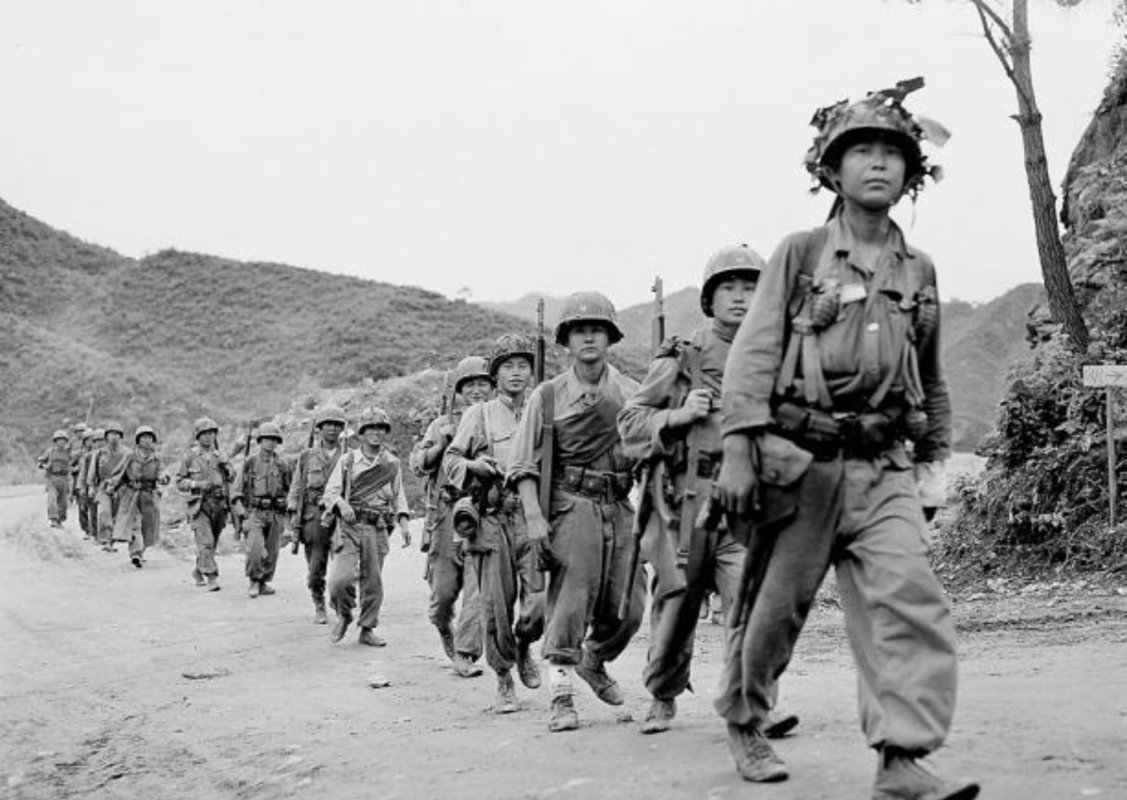 The
war drew in China and the Soviet Union on the North’s side, and UN
forces, led by the US, on the South’s.A ceremony attended by South
Korean and Chinese defence officials was held at Seoul’s Incheon airport
before the remains were flown to the north-eastern
Chinese city of Shenyang, where China has a cemetery for its war
dead.The remains of Chinese and North Korean soldiers have continued to
be discovered over the last six decades, where they were killed, often
in remote woods in bleak by-now-overgrown dug-outs.
The
war drew in China and the Soviet Union on the North’s side, and UN
forces, led by the US, on the South’s.A ceremony attended by South
Korean and Chinese defence officials was held at Seoul’s Incheon airport
before the remains were flown to the north-eastern
Chinese city of Shenyang, where China has a cemetery for its war
dead.The remains of Chinese and North Korean soldiers have continued to
be discovered over the last six decades, where they were killed, often
in remote woods in bleak by-now-overgrown dug-outs.
On June 25, 1950 North Korea invaded South Korea. The South Korean Army fled and forces from the United Nations came to help out. The United States provided the majority of the United Nations forces. Soon the South Korea government only occupied a small part of Korea on the southern tip.At first the United Nations was only trying to defend South Korea, however, after the first summer of fighting, President Truman decided to go on the offensive. He said the war was now about liberating North Korea from communism.President Harry Truman gives a speech and says that that the U.S. will help any country that is threatened by communism. The speech is called the Truman Doctrine.The Truman administration also faced internal criticism regarding its commitment to anticommunism at home. Republican Senator Joseph McCarthy of Wisconsin had recently begun his infamous hunt for communists within the U. S. Government. Although McCarthy was just warming up, the recent trials of Alger Hiss and others for espionage left the Truman administration apprehensive about its anticommunist credentials. Truman and his advisors found themselves under increased domestic pressure not to appear "soft" on communism abroad., when North Korean troops invaded the South, the Truman administration seized upon the opportunity to defend a noncommunist government from invasion by communist troops. Determined not to "lose" another country to communism, and interested in shoring up its anticommunist credentials, the Truman administration found itself defending a nation a world away from U.S. soil. Yet Truman's response was not merely a response to internal pressure. The invasion of South Korea made Truman genuinely fearful that the Soviet Union and China intended to expand the sphere of communism throughout Asia.Truman's statement of June 27 illustrates his concern with communist aggression and expansion. In it, Truman argues that "communism has passed beyond the use of subversion to conquer independent nations and will now use armed invasion and war." Truman's statement suggests that he believed the attack by North Korea had been part of a larger plan by communist China and, by extension, the Soviet Union. The President believed that the Korean situation was similar to that of Greece in 1947. He informed his advisors that he believed the invasion was "very obviously inspired by the Soviet Union." This gave America a moral imperative to act. "If we don't put up a fight now," Truman observed to his staff, there was "no telling what they'll do." His concern over the future of anticommunist governments in Asia showed in his public statement. Truman pledged to defend Formosa (Taiwan) from attack and to support French forces in Indochina, a conflict that would eventually escalate into the Vietnam War. Yet Truman had no wish to provoke a full-scale war with the Soviets. By blaming "communism" in the statement, as opposed to the Soviet Union, Dean Acheson later explained, the administration sought to give the Soviets a "graceful exit" and not provoke open confrontation with Russia.Truman's statement also reflected a new military order. Although the United States took the lead in the Korean action, it did so under the rubric of the United Nations. Truman made it clear that his actions fell within the measures recommended by the United Nations, and reminded "all members of the United Nations" to "consider carefully the consequences of this latest aggression in Korea" and that America "will continue to uphold the rule of law."This document is part of the George M. Elsey papers, located at the Harry S. Truman Presidential Library in Independence, Missouri. Elsey, who had worked under President Franklin D. Roosevelt during World War II, was a top administrative assistant to the President. Truman met with Elsey and other advisors on the morning of the 27th to draft and revise the public statement--his second on the Korean conflict. At 11:30 a.m. the President met with members of the foreign affairs and foreign relations committees of Congress and, shortly after, the statement was released to newspaper reporters. That afternoon, Truman attended another meeting of the United Nations to propose a resolution urging all members of the United Nations to give assistance to South Korea. The meeting had been originally planned for the morning but was postponed to accommodate one of its members. Secretary of State Dean Acheson later reflected that the Soviets liked to point out that since the U.N. meeting occurred after the President's statement, Truman could not truthfully claim that his decision to commit forces was influenced by the wishes of the United Nations. When it did meet later that day, the United Nations passed his resolution, although a handful of dissenting countries abstained.Before World War II the Korean Peninsula had been a part of Japan. After the war it needed to be divided up. The Northern half went under the control of the Soviet Union and the Southern half under the control of the United States. The two sides were divided at the 38th parallel.Eventually two separate states formed with North Korea forming a communist government with Kim Il-sung as leader and South Korea forming a capitalist government under the rule of Syngman Rhee.The two sides did not get along and there were constant skirmishes and battles along the border at the 38th parallel. Attempts were being made to negotiate a unified country, but they were going nowhere.
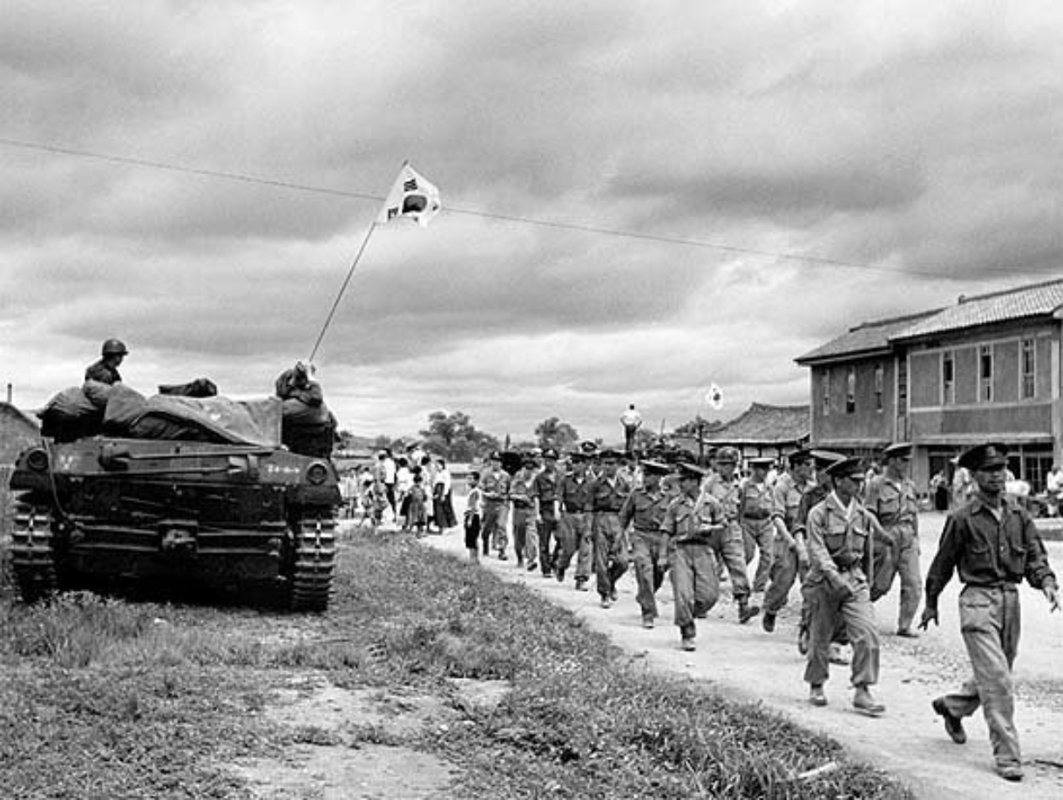 The
war drew in China and the Soviet Union on the North’s side, and UN
forces, led by the US, on the South’s.A ceremony attended by South
Korean and Chinese defence officials was held at Seoul’s Incheon airport
before the remains were flown to the north-eastern
Chinese city of Shenyang, where China has a cemetery for its war
dead.The remains of Chinese and North Korean soldiers have continued to
be discovered over the last six decades, where they were killed, often
in remote woods in bleak by-now-overgrown dug-outs.
The
war drew in China and the Soviet Union on the North’s side, and UN
forces, led by the US, on the South’s.A ceremony attended by South
Korean and Chinese defence officials was held at Seoul’s Incheon airport
before the remains were flown to the north-eastern
Chinese city of Shenyang, where China has a cemetery for its war
dead.The remains of Chinese and North Korean soldiers have continued to
be discovered over the last six decades, where they were killed, often
in remote woods in bleak by-now-overgrown dug-outs.
Battle of Inchon,was a decisive invasion and battle during the Korean War, conceived and commanded by U.S. General of the Army Douglas MacArthur. It was deemed extremely risky, but today is considered one of the most successful military operations of modern times.The battle began on September 15, 1950, and ended around September 28. During the amphibious operation, United Nations (UN) forces secured Inchon and broke out of the Busan region through a series of landings in enemy territory. The majority of UN ground forces participating in this assault were U.S. Marines.General George MacArthur led the UN forces on an attack at the Battle of Inchon. The Battle was a success and MacArthur was able to move in and route much of the North Korean army. He soon had retaken control of the city of Seoul as well as South Korea back up to the 38th parallel.Few major victories have generated as much controversy as the Sept. 15, 1950, invasion of Inchon, South Korea; but then, few American military leaders have sparked such debate as General Douglas A. MacArthur. At Inchon he gambled on an amphibious landing to change the course of the Korean War. That gamble paid off but may have led to a strategic miscalculation of even greater proportions.On June 25, 1950, North Korean leader Kim Il-sung launched a full-scale invasion across the 38th parallel into South Korea. Seoul fell quickly, and weak U.S. forces intervened under the United Nations flag. By late July the North Korean People’s Army (NKPA) had pushed U.N. and Republic of Korea (ROK) forces into a pocket on the southeast corner of the peninsula that became known as the Pusan Perimeter, after the port city at its heart.U.S. Commander in Chief, Far East, MacArthur was tapped to head United Nations Command and arrived in Korea in late June. He had few available ground forces but concluded that command of the sea gave him the advantage of strategic mobility. Exploiting this advantage would be the key to victory. He decided on an amphibious assault behind NKPA lines to liberate Seoul and cut North Korean supply lines. After studying several alternatives, he settled on the port of Inchon.Critics found numerous flaws in MacArthur’s plan, pointing out that Inchon would be easy to defend. The approaches to the port were narrow and easily mined, and troops would have to debark at port facilities, along seawalls or in mudflats. The landing could only occur on a rising tide limiting possible dates to three or four days per month. Finally, defenses built by the Japanese during World War II overlooked the harbor. A strong and determined North Korean defense could doom the landing.The Battle of Inchon reversed the near-total occupation of the peninsula by the invading North Korean People's Army (NKPA) and began a counterattack by UN forces that led to the recapture of Seoul. The advance north ended near the Yalu River, when China's People's Volunteer Army, faced with the complete loss of Korea from the communist camp as well as a perceived threat to China's security, entered the conflict by deploying approximately 150,000 Chinese troops in support of North Korea. Chinese forces overran UN forces along the Ch'ongch'on River and forced a withdrawal after the Battle of Chosin Reservoir to South Korea. After the Chinese entered the war, a stalemate generally ensued, resulting in the permanent division of the country into North and South near the 38th parallel. It remains one of the political hot spots in the world, and a dividing line between democracy and the remnants of communism.Navy planners had their hands full even without worrying about the enemy response. Task Force 90 (TF 90), the amphibious fleet carrying the invasion force, had to transport 53,000 men in two divisions (1st Marine and the Army’s 7th Infantry) and associated forces, plus thousands of tracked and wheeled vehicles and some 25,000 tons of food, fuel and ammunition. Weather was the greatest danger. Typhoons raged through the region in early September, and it was only by sailing from Japan a day early that the ships avoided being engulfed by Typhoon Kezia. TF 90 narrowly escaped disaster but still suffered badly from the storm. MacArthur, who accompanied the invasion force, became desperately seasick. He returned to deck just in time to observe the main naval bombardment on September 14.The landing was well executed. Naval guns devastated enemy shore batteries and harbor defenses, and aircraft supported the landing. Marines occupied the port and beaches, making use of lessons learned in World War II’s Pacific Theater. The landing force, X Corps, overwhelmed the NKPA defenders and drove inland over the following days as U.N. and ROK troops broke out of the Pusan Perimeter. Seoul fell on September 29, and MacArthur’s forces pursued the North Koreans toward the Yalu River.Inchon was a decisive military victory in the short term and a fitting cap to MacArthur’s career. The entire campaign up to the fall of Seoul cost just over 3,000 U.N. casualties, against more than 20,000 North Koreans. Although the NKPA remained intact, with significant reserves, the campaign led directly to the liberation of South Korea.Unfortunately, Inchon engendered overconfidence, leading MacArthur and the Truman administration to endorse a bold drive north to the Yalu in hopes of uniting the peninsula under a Western-oriented regime. Just as he had discounted NKPA opposition at Inchon, MacArthur dismissed the possibility of Chinese military intervention in the conflict. In October, however, Chinese forces surged across the Yalu, nearly overwhelming the Marines at Chosin and forcing a retreat back to the 38th parallel. This strategic defeat outweighed the victory at Inchon, in part leading to MacArthur’s dismissal. Years of stalemate would follow.
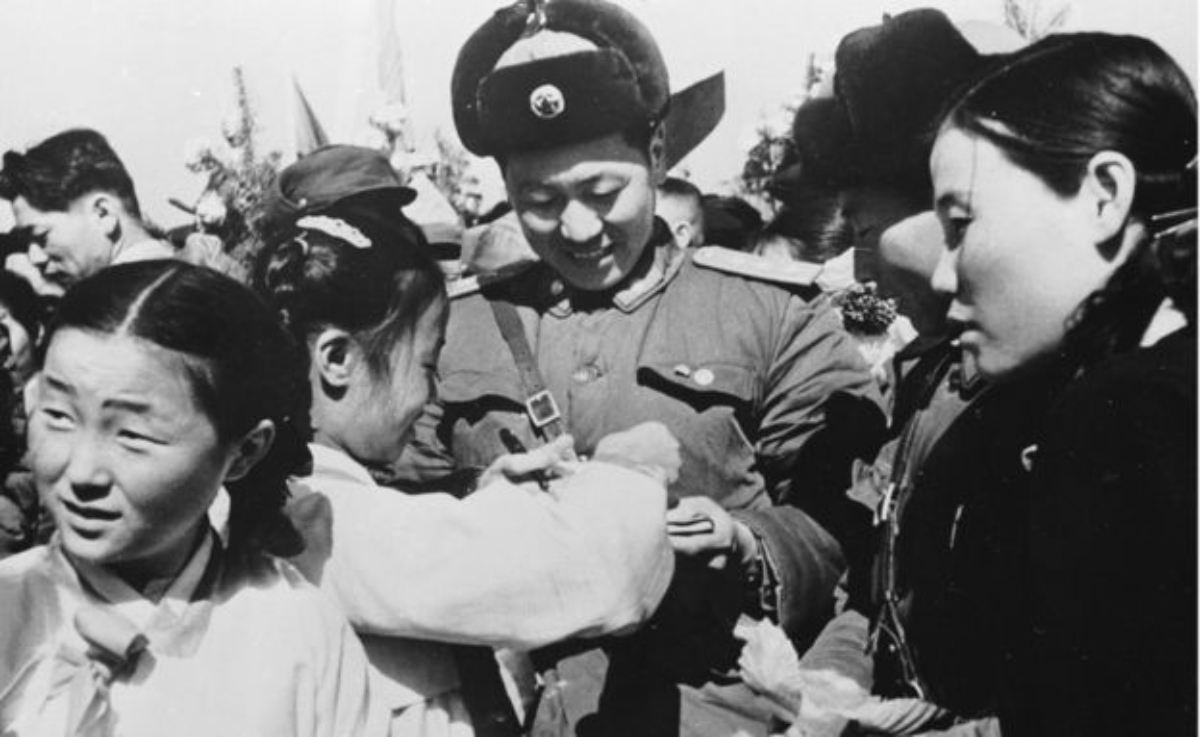 Since
the Korean Armistice Agreement in 1953 there has existed a vague
understanding that China would send troops across the Korean border
should a full-blown conflict resume. Last April, Chinese state-run
Global Times published an editorial suggestingBeijing
should show restraint in the event that the US conduct a surgical
strike on the North. If South Korean or US troops were to cross the 38th
parallel, however, China would have no choice but to follow through
with its long-standing commitment to send ground troops in to maintain
the integrity of the border.
Since
the Korean Armistice Agreement in 1953 there has existed a vague
understanding that China would send troops across the Korean border
should a full-blown conflict resume. Last April, Chinese state-run
Global Times published an editorial suggestingBeijing
should show restraint in the event that the US conduct a surgical
strike on the North. If South Korean or US troops were to cross the 38th
parallel, however, China would have no choice but to follow through
with its long-standing commitment to send ground troops in to maintain
the integrity of the border.
Chinese Intervention,in October 1950, Chinese troops under the name of the Chinese People’s Volunteer Army (CPV) crossed the Yalu River to assist North Korean armies, and engaged in the Korean War in an offensive manner after the U.S. troops crossed the 38th parallel. One central question immediately arises with regard to the Chinese intervention: Why did the newly established People’s Republic of China (PRC) decide to send its troops to engage in a war which did not take place on its own territory?This issue is especially puzzling when one considers the facts that the economy of the PRC was shattered, with high inflation, extremely tight fiscal budget and lack of material resources. The internal security and authority of the regime was under threat by various acts of sabotage undertaken by remaining Kuomintang (KMT) agents, and the enemy China faced was far stronger in terms of military equipment and logistical supply. It should also be noted that the Chinese Communist Party (CCP) was preparing for the battles in Taiwan to unify the whole of China. In general, the conditions were highly unfavourable for an intervention operation. Most scholars, like Allen Whiting and Hao Yufan, argue that the reason for the Chinese intervention was mainly the security concern of a possible U.S. invasion of Chinese territory.1 Others, like Sergei Goncharov and John Lewis, put more emphasis on influence of individual leaders like Mao Zedong.2 All the above explanations, however, do not take into consideration possible alternative options China might have had and therefore ignored other aspects behind the decision to intervene.This paper argues that three main factors drove the Chinese decision to engage in the Korean War: security concerns, the need to consolidate CCP’s regime and domestic control, and the ideologies possessed by the individual leaders.This paper will be divided into four parts. The first part of this paper will briefly provide a historical background of the Chinese intervention in the Korean War. The paper will propose that besides traditional security concern of territorial sovereignty, which is a standard explanation for the Chinese decision to intervene, there are also some other important reasons that should be considered. The following three parts will identify and analyse those reasons from three perspectives. In the second part, this paper will analyse Chinese security concerns at the time. The paper examines how the Chinese leadership perceived the level of threat posed by the U.S. presence in the Korean peninsula, and argues that besides the threat on territorial integrity and sovereignty, Beijing was more worried about the constrains on future economic reconstruction and troop deployment posed by a U.S. presence in the border regions.The third part analyses Chinese domestic politics and argues that the second driving force for intervening the Korean War was the need to strengthen the CCP’s regime, boost domestic morale, and reduce the remaining KMT sabotage activities. The fourth part examines the role of the individual Chinese leaders. It looks at the ideologies possessed by key CCP leaders in the Politburo, especially Mao, and argues that the third driving force for the decision to assist Korea is the ideologies possessed by Chinese leaders: internationalism offered by Marxism-Leninism ideology, and hostility towards the U.S. The paper will conclude that the above three factors persuaded Chinese leaders to decide to intervene in the Korean War.American intelligence failed to detect the 180,000 Chinese troops sneaking across the Yalu because the Chinese traveled at night and hid in the mountains during the day. US aerial reconnaissance proved unable to detect these troop movements.MacArthur, still hoping to one day run for President, became obsessed with an absolute victory. He began trying to manipulate Washington, massaging information so that Washington would order him to do exactly what he wanted. Was MacArthur's behavior simply based on an enormous egotism? Some have suggested that he was manic-depressive, and suffered mood swings. Infuriated by MacArthur's actions, Truman certainly wanted to remove him from command, but MacArthur still remained too popular in the US.Many believed that PRC intervention in the Korean War might herald the coming of World War III. Though such a prospect seemed possible, Truman could not simply allow a US retreat, because that would leave South Korea and Syngman Rhee in the lurch, ruining American credibility with regard to its other alliances. Truman had wanted to fight a "limited war," but once engaged, found that circumstances of war in the modern world did not allow for the concept of limited war. The world powers, in their ideological struggle, had their interests everywhere. A PVA Infantry Division numbered 10,000 soldiers. The initial 35 Divisions committed to Korea were well equipped but later units had to send men into battle armed only with grenades. Nevertheless, the Chinese soldier was a tenacious and formidable enemy. The average Chinese soldier was physically tough and committed to his cause. His officers were competent and experienced. Chinese tactics relied on overwhelming the enemy with numbers. The Chinese frequently launched human wave assaults against their foes, considering that losses were secondary to achieving battlefield success.
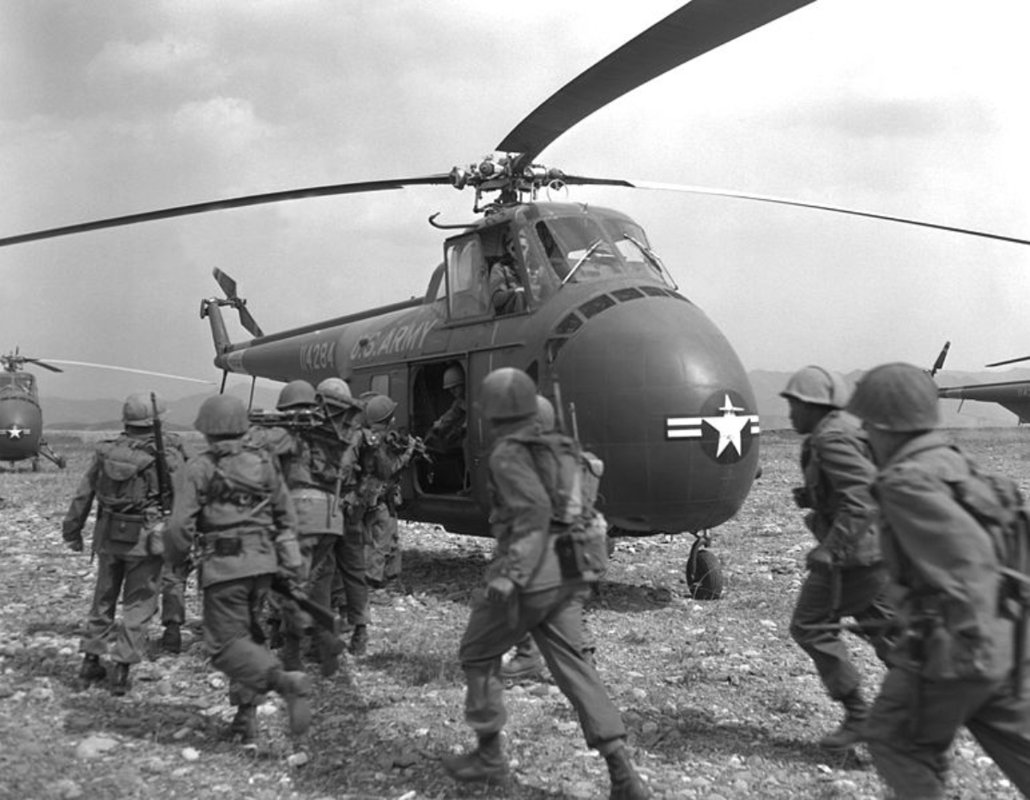 July
4, 1950,American troops fight North Korean troops in Osan. The
Americans expected an easy victory, but are surprised to find out that
they are no match for the North Korean army.The leader and Prime Minister of North Korea was Kim Il-sung. North Korea's chief commander was Choi Yong-kun.The President of South Korea was Syngman Rhee. The South Korean Army was led by Chung II-kwon.
July
4, 1950,American troops fight North Korean troops in Osan. The
Americans expected an easy victory, but are surprised to find out that
they are no match for the North Korean army.The leader and Prime Minister of North Korea was Kim Il-sung. North Korea's chief commander was Choi Yong-kun.The President of South Korea was Syngman Rhee. The South Korean Army was led by Chung II-kwon.
Why did the Soviet Union help North Korea during the Korean War?The Korean War was initiated By Kim under the permission of Stalin. The purpose was for the possible seaports in South Korea, because Mao kicked USSR navy out of China in 1950 treaty.Stalin took control of the Soviet Union in the late 1920s, shortly after Vladimir Lenin died, and had the official title "General Secretary of the Communist Party." As dictator, he vehemently opposed democracy, capitalism and individual, personal freedoms. By the time the Korean War started in 1950, Stalin had already led a reign of terror that forcefully punished those who opposed Communism. He strategically censored and quenched Western values and purged the Soviet Union of ideology that contradicted his socialist pursuits. Stalin established strong ties with other Communist leaders, such as Kim II Sung of North Korea, hoping to build his Soviet empire. Some historians believe Stalin had paranoia.Nikita Khrushchev worked under Stalin during the Korean War and became the Communist Party's First Secretary in the collective leadership that governed the U.S.S.R. after Stalin’s death in 1953. Khrushchev strongly believed that Communism and socialism would eventually suppress capitalism and Western values, but he didn’t use violent purges or aggression to ensure his goals. Khrushchev was flamboyant and dramatic and used his skills to create effective propaganda, encouraging his followers to support Communist rhetoric. When Dwight Eisenhower became President in 1953, he quickly ended the Korean War by threatening to drop an atomic bomb if China, North Korea’s primary supporter, didn’t agree to a truce. Khrushchev followed Eisenhower’s lead and agreed to peaceful co-existence with the United States, supporting the end of the war. Shortly after the war ended, Khrushchev publicly denounced Stalin’s tyrannical leadership style and criticized his acts of violence.Even though the Korean War never reached foreign soil, the Union of Soviet Socialist Republics played an important role in initiating and prolonging the dispute. Soviet leader Joseph Stalin backed North Korea's communist leader Kim II Sung and prompted him to invade South Korea. Stalin was a highly visible dictator who ruled with an iron fist and used the Korean conflict to further his political agenda. The United States supported the South Koreans’ attempt to gain independence from their oppressive position and took a strong stance against Communist leadership that ruled North Korean during the Korean War.At the onset of the Korean War, the Soviets wanted to show the world that the U.S.S.R. was a dominant superpower. Soviet leaders believed they could turn country by country toward Communism and eventually create a world empire. Joseph Stalin and his followers refused to participate in Security Council meetings out of protest against the United Nations’ support of non-Communist leadership in Taiwan and China. As a result of the Soviet Union’s disengagement, they were not present to veto the United Nations' decisions concerning the Korean War. The U.N. determined that sending military assistance to South Korea was necessary.Despites its denials at the time, the Soviet Union was intimately involved in the Korean War. The contribution made by the Soviets was vital. They provided diplomatic support, strategic and grand tactical planning, including the planning of the invasion of South Korea, and essential logistical support. They supplied and trained the air forces of China and North Korea. Soviet pilots flew aircraft with Chinese or North Korean markings and after the war claimed to have shot down over 400 UN aircraft.In keeping with the Soviet Union's practices, North Korea established a communist government to lead the region. South Korea, on the other hand, imitated its American occupiers and created a constitution-backed democracy with Syngman Rhee as its president. As tensions grew between the U.S. and the U.S.S.R., North Korean troops invaded the South Korean region in 1950, inciting the first proxy war of the decades-long Cold War. The United States came to South Korea's aid and helped to press the North Korean army back across the 38th Parallel.The Peoples Republic of China, having become communist as a result of a civil war in the late 1940s, came in on the side of North Korea. They launched an offensive that drove the troops from the U.S. and other United Nations members to back out of North Korea and deep into the southern tip of the peninsula. While the Soviet Union supplied both the North Korean and Chinese armies, they did not enter any formal troops into the battle. Eventually, the war ended with an agreement that re-established the division of the two parts of the country at the original post-World War II border.Khrushchev successfully challenged the Soviet Union’s former reputation as a brutal and violent nation and helped relax some of the tensions between Communist-supported countries and their Western counterparts. He released prisoners of war from the Gulag concentration camps and began a process of de-Stalinization in the U.S.S.R. The results of the Korean War re-established the 38th parallel as the division between North and South Korea. The U.S. placed troops along the border to ensure the success of the armistice and to thwart any hostile actions on either side of the division.The Russians blamed the United States for imposing its will on the United Nations and on South Korea. They saw American capitalism and imperialism at work, and they countered with single slate elections. In their zone a constitution was created and, on September 8, the Democratic People's Republic of Korea was proclaimed.The Soviet Union was presenting North Korea as an independent nation, and the Soviet Union announced that it was withdrawing completely from the northern zone. But it would not allow a United Nations commission entry into its zone to verify the withdrawal.
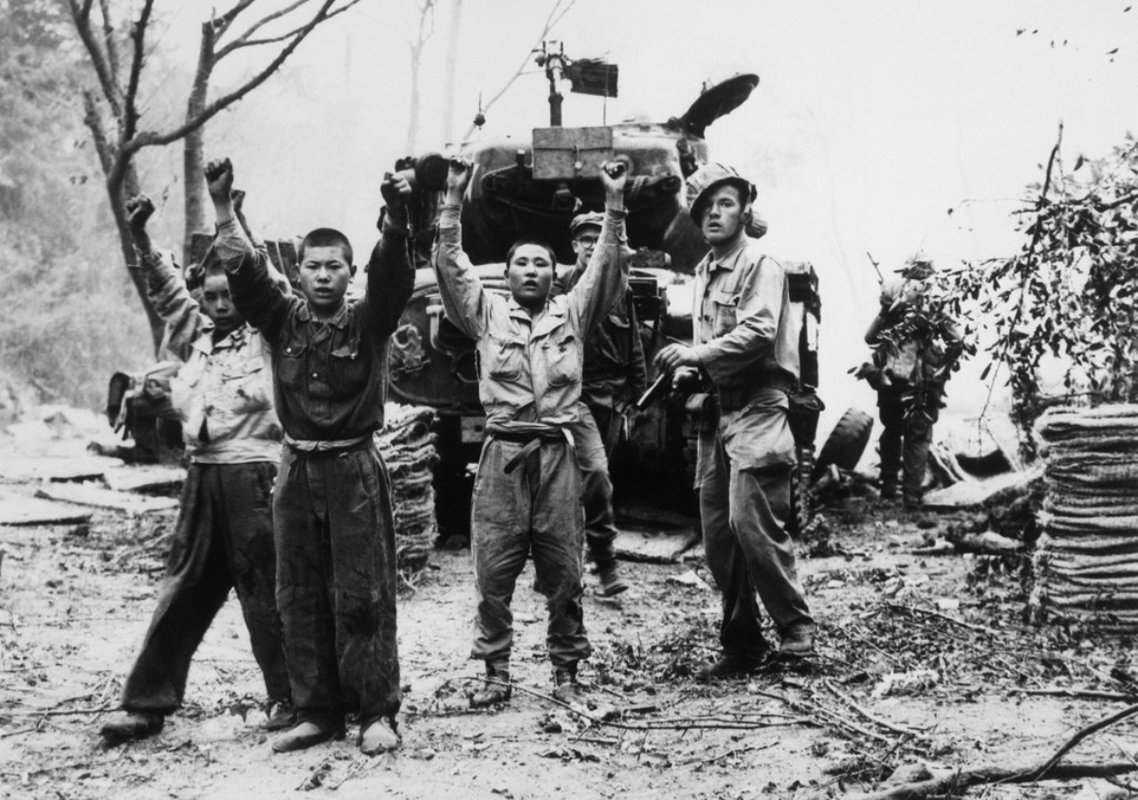 A
U.S. soldier capturing North Korean prisoners of war in 1953.The Korean
War still is not over. While an armistice in 1953 ended active
fighting, it was never followed by a peace treaty. This is why during
their recent meeting, Kim Jong-un, the leader of
North Korea, and President Moon Jae-in of South Korea, in addition to
jointly calling for the “complete denuclearization” of the Korean
Peninsula, also pledged to formally conclude the war.
A
U.S. soldier capturing North Korean prisoners of war in 1953.The Korean
War still is not over. While an armistice in 1953 ended active
fighting, it was never followed by a peace treaty. This is why during
their recent meeting, Kim Jong-un, the leader of
North Korea, and President Moon Jae-in of South Korea, in addition to
jointly calling for the “complete denuclearization” of the Korean
Peninsula, also pledged to formally conclude the war.

